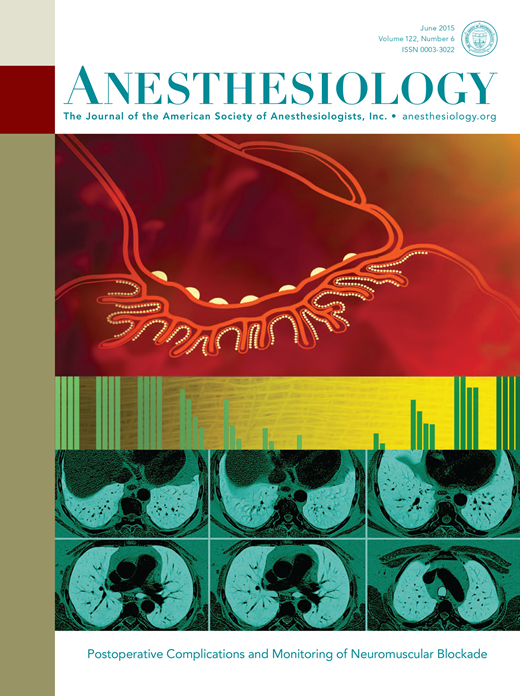中枢杏仁核中全麻激活的神经元介导抗感觉:在神经损伤急性期和慢性期的不同作用。
IF 9.1
1区 医学
Q1 ANESTHESIOLOGY
引用次数: 0
摘要
背景:全身麻醉(GA),如异氟醚,通过尚未完全了解的机制诱导镇痛(疼痛丧失)和意识丧失。最近在中央杏仁核(CeA)中发现了一种独特的gaba能神经元群,它可以被全身麻醉(CeAGA)激活并发挥抗伤害感觉功能。在这项研究中,我们旨在探讨CeAGA神经元在小鼠神经损伤诱导的伤害性致敏的不同阶段的潜在细胞机制。方法采用小鼠107只,其中雄性57只,雌性50只。我们使用1.2%的异氟醚诱导c-Fos在它们的大脑中活化,并通过RNAscope原位杂交验证了Fos的表达。与以往使用CANE方法的研究不同,我们使用Fos-TRAP2方法标记CeAGA神经元(tdTomato+)。然后,我们进行了离体电生理记录,以评估fos阳性/CeAGA神经元和fos阴性CeA神经元的特性。采用化学发生策略选择性激活CeAGA神经元,我们研究了小鼠在神经损伤(SNI)后的疼痛样行为和相关合并症。结果异氟醚诱导CeA - gaba能神经元中Fos表达增强。脑电生理切片显示,与fos -阴性CeA神经元相比,CeAGA神经元具有更高的兴奋性,并表现出不同的动作电位模式。fos - trap CeAGA神经元的化学发生激活增加了naïve小鼠和sni后2周小鼠的伤害性阈值,但在sni后8周表现出适度的抗伤害性。最后,fos阴性CeA神经元,而不是CeAGA神经元,在SNI慢性期表现出兴奋性增加,这与CeA中K +- cl -共转运体-2 (KCC2)的下调有关(假性与SNI 8周)。结论这些结果通过不同的方法验证了CeAGA神经元的抗感觉能力。此外,我们强调CeAGA神经元在控制生理性疼痛、急性疼痛以及通过KCC2失调向慢性疼痛过渡中的独特作用。本文章由计算机程序翻译,如有差异,请以英文原文为准。
General anesthesia-activated neurons in the central amygdala mediate antinociception: Distinct roles in acute versus chronic phases of nerve injury.
BACKGROUND
General anesthesia (GA), such as isoflurane, induces analgesia (loss of pain) and loss of consciousness through mechanisms that are not fully understood. A distinct population of GABAergic neurons has been recently identified in the central amygdala (CeA) that can be activated by general anesthesia (CeAGA) and exert antinociceptive functions. In this study, we aim to explore the underlying cellular mechanisms of CeAGA neurons across different phases of nerve injury-induced nociceptive sensitization in mice.
METHODS
This study used 107 mice, including 57 males and 50 females. We induced c-Fos activation in their brains using 1.2% isoflurane and validated Fos expression via RNAscope in situ hybridization. Unlike previous studies using the CANE method, we labeled CeAGA neurons (tdTomato+) with the Fos-TRAP2 method. We then performed ex vivo electrophysiological recordings to assess the properties of both Fos-positive/CeAGA neurons and Fos-negative CeA neurons. Using chemogenetic strategy to selectively activate the CeAGA neurons, we investigated pain-like behaviors and associated comorbidities in mice after spared nerve injury (SNI).
RESULTS
Isoflurane induced robust Fos expression in CeA GABAergic neurons. Electrophysiological recordings in brain slices revealed that compared to Fos-negative CeA neurons, CeAGA neurons had higher excitability and exhibited distinct patterns of action potentials. Chemogenetic activation of Fos-TRAPed CeAGA neurons increased nociceptive thresholds in naïve mice and in mice 2 weeks post-SNI, but demonstrated modest antinociception 8 weeks post-SNI. Finally, Fos-negative CeA neurons, but not CeAGA neurons, exhibited increased excitability in the chronic phase of SNI, which was correlated with a downregulation of K +-Cl - cotransporter-2 (KCC2) in the CeA (sham vs. SNI 8 weeks).
CONCLUSIONS
These results validate the antinociceptive power of CeAGA neurons using a different approach. Additionally, we highlight distinct roles of CeAGA neurons in governing physiological pain, acute pain, and the transition to chronic pain through KCC2 dysregulation.
求助全文
通过发布文献求助,成功后即可免费获取论文全文。
去求助
来源期刊

Anesthesiology
医学-麻醉学
CiteScore
10.40
自引率
5.70%
发文量
542
审稿时长
3-6 weeks
期刊介绍:
With its establishment in 1940, Anesthesiology has emerged as a prominent leader in the field of anesthesiology, encompassing perioperative, critical care, and pain medicine. As the esteemed journal of the American Society of Anesthesiologists, Anesthesiology operates independently with full editorial freedom. Its distinguished Editorial Board, comprising renowned professionals from across the globe, drives the advancement of the specialty by presenting innovative research through immediate open access to select articles and granting free access to all published articles after a six-month period. Furthermore, Anesthesiology actively promotes groundbreaking studies through an influential press release program. The journal's unwavering commitment lies in the dissemination of exemplary work that enhances clinical practice and revolutionizes the practice of medicine within our discipline.
 求助内容:
求助内容: 应助结果提醒方式:
应助结果提醒方式:


